{Click on any image to view full size, then use the back button on your browser to return to this page}
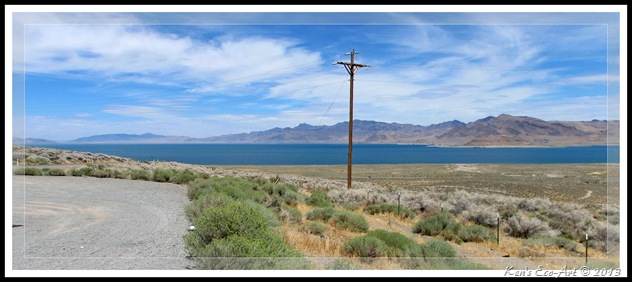 |
| (Fig. 01) |
|
05/11/2006 Trip Notes: While visiting my sister in Reno, we ended up taking a daytrip that took us to Pyramid Lake in Nixon, NV. From Reno, take I-80 east bound, get off on exit 18 (Pyramid Lake/SR 445) head north for about 35 miles. The drive from Reno carries you through a succession of shallow depressions between low, brush-stubbled hills, a constant reminder of the desert's monotony. However, once you pass over the last hill, the eye searing expanse of Pyramid Lake stretched out before you (Fig. 01) is an almost shocking, staggering sight.
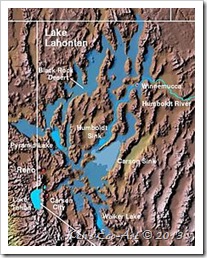 |
| (Fig. 02) |
Lake History: Nearly 27 miles long and 11 miles wide, the view in (Fig. 01) above was taken from close to its It was named for the pyramid-shaped island (Fig. 03) just off the east shore by John C. Fremont who came upon the lake on January 10th, 1844. This remnant of ancient Lake Lahontan (Fig. 02), which during the ice age more than 12,700 years ago, covered approximately 8,450 square miles. The lake had largely disappeared in its extended form about 9,000 years ago. As the surface elevation dropped, the lake broke up into series of smaller lakes, most of which rapidly dried up, leaving only a playa. The only modern remnants existing as true lakes are Pyramid Lake and Walker Lake, far to the south.
The Pyramid Lake Indian reservation was created in 1859. In a fierce battle for the lake between the Paiute people and the white man in 1860 is said to have killed more white men than any other White-Indian engagement in the far west. In 1913, Anaho Island, just to the south - to the right of the Pyramid on (Fig. 04), was established as a National Wildlife Refuge and is today one of the largest white pelican nesting grounds in North America. The last view (Fig. 05) was taken from opposite the pyramid, looking towards the north end of the lake.
Widely acclaimed as North America’s most beautiful desert lake, it’s actually the world class fishery that has brought Pyramid Lake worldwide fame. Pyramid Lake is the only habitat in the world for the Cui-ui fish that has been around for over 2 million years. The Pyramid Lake fishery includes the famous Lohanton Cutthroat Trout that have grown to record sizes and have lured fisherman from around the world over for several decades. In 1925 a Paiute named Johnny Skimmerhorn caught the world's record cutthroat here; a 41-pounder.
Commercial fishermen harvested 100 tons of trout between winter 1888 and spring 1889, for shipment all over the U.S. Restocking began in the early 1950s, and today five to ten pounders are not uncommon at Pyramid. Tours can be taken at the fish hatcheries at Sutcliffe.
|
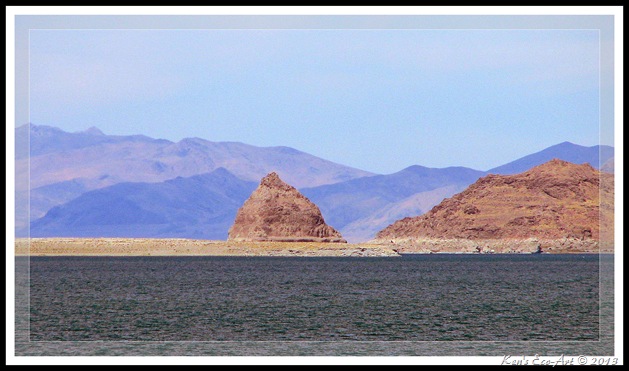 |
| (Fig. 03) |
|
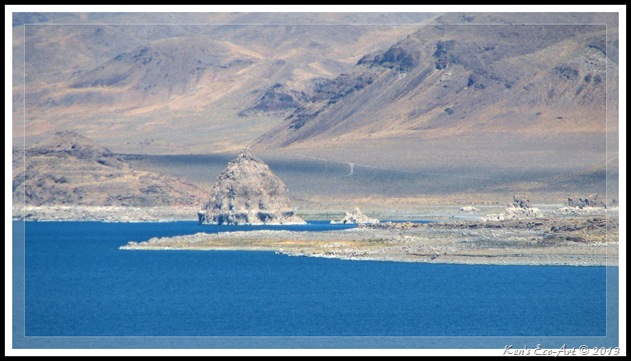 |
| (Fig. 04) |
|
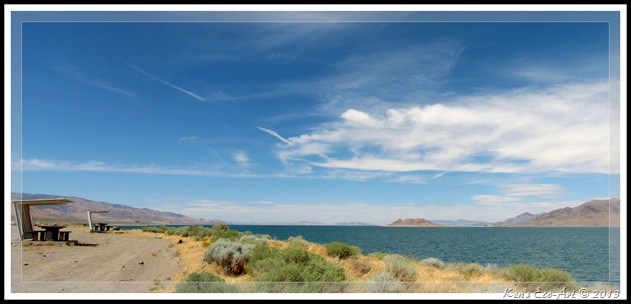 |
| (Fig. 05) |
|
The single page PDF file below was created in June of 2006 after a trip in May that took us to Pyramid Lake while on a roadtrip to Reno to visit my sister. To view for reading, click on the “Full Screen”  icon located at the very right of the Scribd menu bar at the bottom of the page. Directly below this file I have included a slideshow with some additional pictures of our visit. icon located at the very right of the Scribd menu bar at the bottom of the page. Directly below this file I have included a slideshow with some additional pictures of our visit. |
|
|
|



